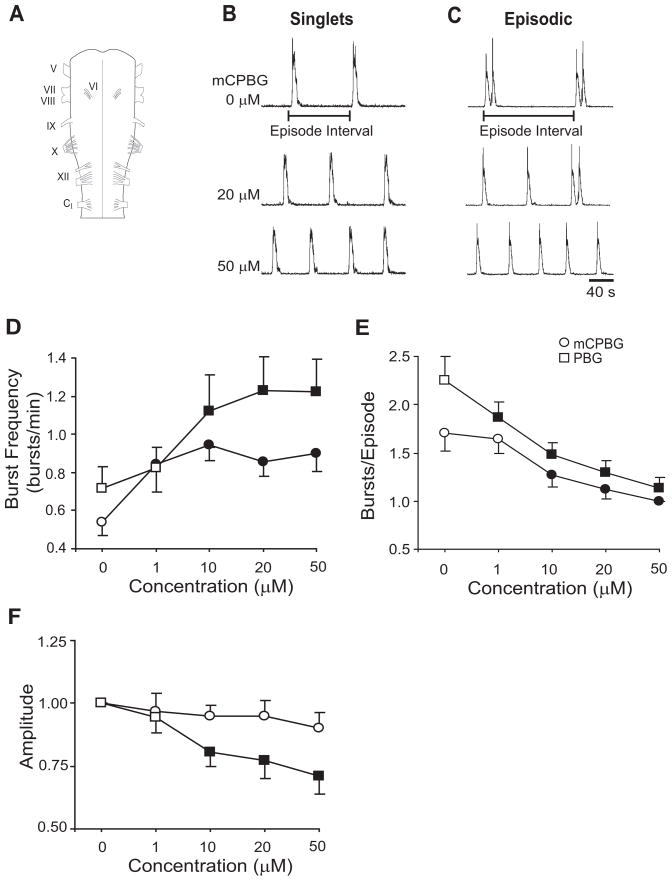Fig. 1.
5-HT3 receptor activation alters respiratory motor output. (A) Drawing of turtle brainstem with cranial nerves labeled. A suction electrode attached to the hypoglossal (XII) nerve roots records spontaneous respiratory motor output. Integrated and rectified traces of respiratory motor output show mCPBG-dependent (5-HT3 agonist) changes in brainstems producing singlet (B) and episodic (C) respiratory-related bursts of motor activity. Episode interval, which is used to quantify regularity, is measured as time from the start of one episode to the start of the next episode. Singlets are considered an episode with one respiratory burst. Cumulative dose-response experiments show that mCPBG (circle) and PBG (square) increased burst frequency (D) and decreased bursts/episode (E) in a dose-dependent manner. Burst amplitude was decreased by PBG, but not mCPBG (F). Values which differ significantly (P<0.05) from the baseline value are indicated by a solid symbol.

